| Revision as of 19:33, 28 January 2009 editKintetsubuffalo (talk | contribs)Autopatrolled, Extended confirmed users, Pending changes reviewers203,496 editsm Reverted edits by 142.33.32.70 (talk) to last version by The Transhumanist← Previous edit | Revision as of 04:09, 29 January 2009 edit undoDekimasu (talk | contribs)Administrators56,417 editsm →General reference: link is not to an articleNext edit → | ||
| Line 19: | Line 19: | ||
| == General reference == | == General reference == | ||
| * ]: | * ]: | ||
| * ]: |
* ]: Japanese | ||
| * ] | * ] | ||
Revision as of 04:09, 29 January 2009
| Japan |
|---|
| Index (Alphabetical indices) |
| 0–9 A B C D E F G H I J K L M N O P Q–R S T U–V W–X Y–Z |
| Navigation |

Japan is an island country in East Asia that includes over 3,000 islands, the largest of which are Honshū, Hokkaidō, Kyūshū and Shikoku, together accounting for 97% of its land area. Japan lies in the Pacific Ocean to the east of China, Korea and Russia, stretching of the Sea of Okhotsk in the north and the East China Sea in the south to Taiwan. Japan is a unitary constitutional monarchy with an emperor and an elected parliament (the Diet).
Japan has the world's tenth largest population, with about 128 million people. The Greater Tokyo Area, which includes the capital city of Tokyo and several surrounding prefectures, is the largest metropolitan area in the world, with over 30 million residents. A world leader in technology and machinery, Japan has the world's second largest economy by nominal GDP, is the world's fourth largest exporter and is the sixth largest importer.
The characters that make up Japan's name mean "sun-origin", which is why Japan is sometimes identified as the "Land of the Rising Sun".
The following topic outline is provided as an overview of and introduction to Japan:

General reference
Geography of Japan
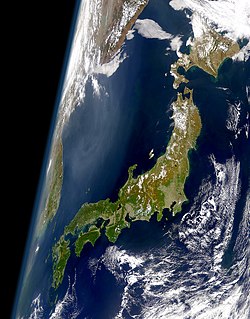
- Main articles: Geography of Japan
- Japan is: an island country of over 3,000 islands
- Location:
- Population of Japan: 127,433,494 people - 10th most populous country
- Area of Japan: Template:Unit sqkm - 62nd largest country
- Atlas of Japan
- Addressing system in Japan
- Historic provinces of Japan
- Japan Standard Time
Environment of Japan
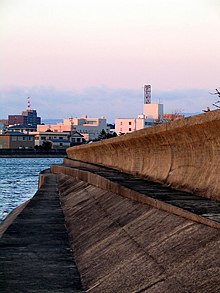
- Climate of Japan
- Ecology of Japan
- Geology of Japan
- National parks of Japan
- Protected areas of Japan
- Tsunami
- Wildlife of Japan
Geographic features of Japan

- Main article: Landforms of Japan
- Fjords of Japan
- Glaciers of Japan
- Islands of Japan
- Lakes of Japan
- Mountains of Japan
- Rivers of Japan
- Three Views of Japan
- Valleys of Japan
- World Heritage Sites in Japan
Regions of Japan
- Main articles: Islands of Japan and Regions of Japan
The four main islands of Japan are:
Major regions of Japan include:
- Hokkaidō (the island of Hokkaidō and nearby islands, largest city Sapporo)
- Tōhoku region (northern Honshū, largest city Sendai)
- Kantō region (eastern Honshū, largest cities Tokyo and Yokohama)
- Chūbu region (central Honshū, including Mt. Fuji), sometimes divided into:
- Hokuriku region (northwestern Chūbu)
- Kōshin'etsu region (northeastern Chūbu, largest city Nagano)
- Tōkai region (southern Chūbu, largest city Nagoya, Hamamatsu, and Shizuoka)
- Kansai or Kinki region (west-central Honshū, largest cities Osaka, Kobe, and Kyoto)
- Chūgoku region (western Honshū, largest city Hiroshima, and Okayama)
- Shikoku (island, largest city Matsuyama, and Takamatsu)
- Kyūshū (island, largest city Fukuoka) which includes:
- Ryukyu Islands, including Okinawa
Ecoregions of Japan
- Main article: Ecoregions of Japan
Administrative divisions of Japan
- Main article: Prefectures of Japan
- Administrative division types
Prefectures of Japan
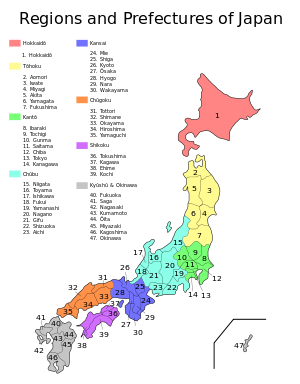
From north to south (numbering in ISO 3166-2:JP order), the prefectures of Japan and their commonly associated regions are:
|
1. Hokkaidō 2. Aomori 8. Ibaraki |
15. Niigata 24. Mie |
31. Tottori 36. Tokushima 40. Fukuoka |
Karafuto, a portion of the island of Sakhalin north of Hokkaidō (not shown on the map), was part of Japan from 1907 until World War II. The entire island is now governed by Russia, but some Japanese people claim Karafuto is still part of Japan.
Municipalities of Japan

Demography of Japan
- Main article: Demographics of Japan
Government and politics of Japan


- Main article: Government of Japan and Politics of Japan
- Form of government: parliamentary multi-party representative democratic constitutional monarchy
- Capital of Japan: Tokyo
- Elections in Japan
- (specific elections)
- Imperial House of Japan (Imperial family)
- Civil service of Japan
- Japanese public corporations
- Independent administrative institutions of Japan
- Political parties in Japan
- Government-business relations in Japan
- Human rights in Japan
- Mass media and politics in Japan
- Monetary and fiscal policy of Japan
- Political funding in Japan
- Political scandals of Japan
- Political extremism in Japan
- Taxation in Japan
- Health care in Japan
- Social welfare in Japan
Branches of the government of Japan
Main article: Government of JapanExecutive branch of the government of Japan

- Symbol of state: Akihito, Emperor of Japan
- Emperor has no executive authority, but is treated as a head of state under diplomatic protocol
- Controversies regarding the role of the Emperor of Japan
- Emperors of the past
- Head of state: de facto head of state of Japan is the head of government, the Prime Minister (see below)
- Head of government: Taro Aso, Prime Minister of Japan
- Kantei (Office and residence of the Prime Minister)
- Prime Ministers of the past
- Cabinet of Japan
- Ministries of Japan
- National Public Safety Commission
- Ministry of Internal Affairs and Communications
- Ministry of Justice
- Ministry of Foreign Affairs
- Ministry of Finance (Japan)
- Ministry of Education, Culture, Sports, Science and Technology
- Ministry of Health, Labour and Welfare
- Ministry of Agriculture, Forestry and Fisheries
- Ministry of Economy, Trade and Industry
- Ministry of Land, Infrastructure and Transport
- Ministry of the Environment
- Ministry of Defence
Legislative branch of the government of Japan

- Diet of Japan (bicameral legislature of Japan)
- National Diet Building
Judicial branch of the government of Japan
Foreign relations of Japan
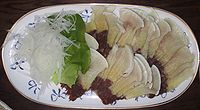
- Diplomatic missions of Japan
- Foreign aid institutions of Japan
- Foreign policy of Japan
- Japan's non-nuclear policy
- Japan-United States relations
- Whaling in Japan
International organization membership
Japan is a member of:
- United Nations
- G8
- G4
- Organisation for Economic Co-operation and Development (OECD)
- Asia-Pacific Economic Cooperation (APEC)
Law and order in Japan

- Main article: Law of Japan
- Attorneys in Japan
- Capital punishment in Japan
- Civil Code of Japan
- Constitution of Japan
- Criminal justice system of Japan
- Crime in Japan
- Juries in Japan
- Human rights in Japan
- Law enforcement in Japan
- Penal system of Japan
- Public order and internal security in Japan
Military of Japan
- Main article: Military of Japan
- Japan's non-nuclear policy
- Japan Self-Defense Forces
- Army of Japan: Japan Ground Self-Defense Force
- Navy of Japan: Japan Maritime Self-Defense Force
- Air force Japan: Japan Air Self-Defense Force
- Military history of Japan
- National security of Japan
History of Japan
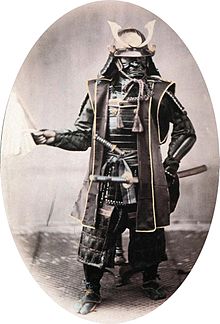
- Main articles: History of Japan, Timeline of Japanese history, and Current events of Japan
By period
|
|
Culture of Japan
- Main article: Culture of Japan
|
Architecture of Japan
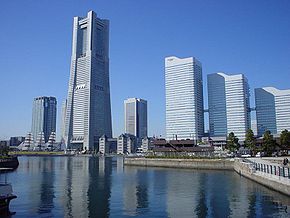
The Arts in Japan
|
|
|
Cuisine of Japan

- Examples:
- Japanese dishes
- Japanese snacks
Cultural icons of Japan

Fashion in Japan

Holidays and festivals
Main articles: Holidays of Japan and Japanese festivalsHomes in Japan
- Main article: Homes in Japan
|
|
Language in Japan
Main article: Languages of Japan|
|
People of Japan
Main articles: Japanese people and List of Japanese people
|
Ethnicity in Japan
|
Stereotypes
|
Religion in Japan
Main article: Religion in Japan|
|
Sports and games in Japan
- Main article: Sports in Japan
- Sports
- Traditional Games
Economy of Japan
- Main article: Economy of Japan
- Economic rank, by nominal GDP (2007): 2nd (second)
|
Education in Japan

- Main article: Education in Japan and History of education in Japan
- History of education in Japan
- Japanese history textbook controversies
- Juku (Cram School)
- Language minority students in Japanese classrooms
- Romanization of Japanese
- School uniforms in Japan
- Yutori education
Structure of education in Japan
Infrastructure of Japan

- Buildings and structures in Japan
- Communications in Japan
- Energy in Japan
- Health care in Japan
- National parks of Japan
- Transportation in Japan
- Water supply and sanitation in Japan
Science and technology in Japan
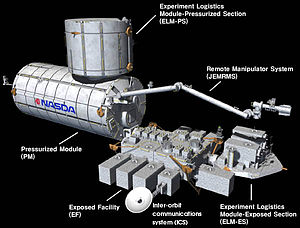
See also
- Japanese Misplaced Pages
- List of basic geography topics
- List of Japan-related articles
- List of Japan-related topics
- List of international rankings
References
- "Nihon Rettō". Daijirin / Yahoo Japan dictionary. Retrieved 2007-05-07.
External links
- Official
- Kantei.go.jp—Official prime ministerial and cabinet site
- Kunaicho.go.jp—Official site of the Imperial family.
- Ministry of Foreign Affairs—Detailed papers on Japan's foreign policy, education programs, culture and life.
- Shugi-in.go.jp—Official site of the House of Representatives
- National Diet Library (English)
- Media
- Tourism
- Other
- CIA World Factbook—Japan
- Encyclopaedia Britannica's Japan portal site
- Guardian Unlimited—Special Report: Japan
 Wikimedia Atlas of Japan
Wikimedia Atlas of Japan- Works by Government of Japan at Project Gutenberg containing the 1889 and 1946 Constitutions
| Lists in Misplaced Pages | |
|---|---|